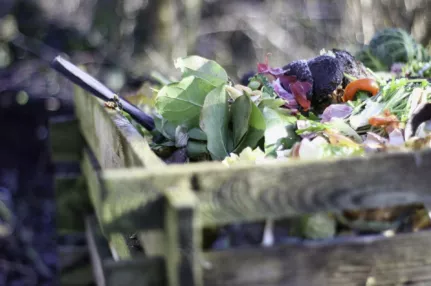How to Maintain Your Compost Bin Over Winter

Winter's chill doesn't have to freeze your composting efforts - there’s still plenty of ways to keep your compost pile cooking through the cold months, ensuring a steady supply ready for use in spring.
Insulation
To ensure that your compost continues to break down throughout the winter months, you need to make sure it's staying warm. More heat means a better habitat for the microorganisms to thrive & decompose your waste.
Your compost can stay protected & insulated if you invest in a compost bin or try your hand at a makeshift shelter. Warmer, dryer conditions are ideal for the microbes that facilitate composting.

What Compost Bin Should I Get?
A larger bin (3x5ft minimum) allows you to store more waste, which in turn retains more heat and makes the decomposition process faster. Consider opting for a bin with a lid, especially if you plan to compost year-round to help retain heat.
Ensure your chosen bin has drainage holes at the bottom- you can also drill these yourself. This allows water to drain away from the compost pile with ease, preventing waterlogging and ensuring sufficient airflow.
Maintain a steady flow of composting materials throughout the winter, just as you would in the summer. Regularly top up the pile with a balanced mix of 70% Brown waste & 30% green waste.

You can use layers of leaves, straw or cardboard to help insulate and keep warmth in the pile, ensuring your compost stays active and productive even when temperatures drop.
Aeration
On milder days or when the pile isn’t frozen solid, you should try to turn over the pile to encourage airflow & heat distribution. Refill with fresh waste as often as you can to feed those nutrient hungry microbes and keep the pile cooking.
If your compost has frozen, it means that the decomposition process will slow down whilst you wait for it to thaw. You can try and aid the thawing process by adding more brown waste to create layers of insulation or by using a gardening rake to break it up and adding unfrozen materials to the centre of the pile, turning the mixture over as best as you can to promote aeration.
Location
- If you position your compost pile/bin in an area of your garden that the winter sun hits at its hottest (11am-2pm) this should help in keeping the compost as warm as possible.
- Avoid exposing your bin to strong winds or drafts, as they can rapidly remove heat - choose a sheltered spot near a wall, fence, or building.
- Direct contact with the ground can draw away heat, especially if the ground is frozen. Consider elevating your bin on a platform made of wood or bricks, this will also help with drainage.

Preservation
If you can’t restock your compost pile every day, you can freeze any food/kitchen scraps (either whole or blended / cut up). This lessens the smell and keeps flies away, ensuring your scraps are neatly stored & ready to go into your bin when it has space. The frozen scraps will then thaw in the warm pile, or you can defrost them before placing into the compost.


